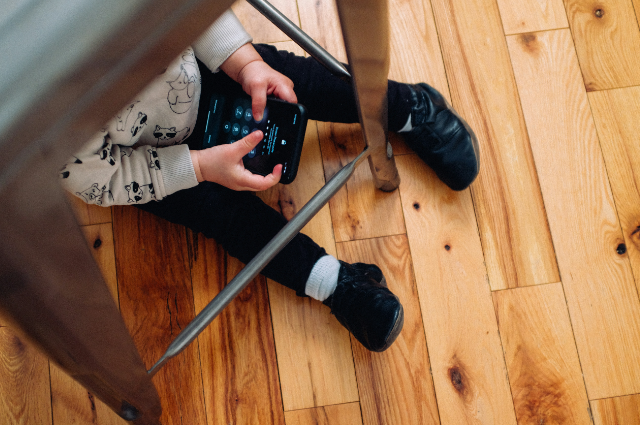
Photo by charlesdeluvio on Unsplash
In the modern digital age, mobile phones and electronic gadgets have become ubiquitous tools that shape the way children interact with the world around them. While these devices offer numerous benefits in terms of communication, learning, and entertainment, there is a growing concern about how they can lead to a detachment from the realistic aspects of life. This essay aims to explore the ways in which mobile phones and electronic gadgets can control children, preventing them from fully engaging with the tangible world and experiencing its joys and challenges. By examining the impact of technology on children’s relationships, creativity, and overall well-being, we can better understand the importance of striking a balance between screen time and real-life experiences.
The Influence of Mobile Phones and Electronic Gadgets on Children’s Relationship with Reality
Mobile phones and electronic gadgets have a profound impact on children’s relationships with the realistic aspects of life. These devices offer a constant stream of entertainment, information, and social connection that can be engrossing and addictive, leading children to prioritize virtual experiences over real-life interactions. As a result, children may become disconnected from their surroundings, missing out on the sights, sounds, and sensations that make up the physical world.
Furthermore, mobile phones and electronic gadgets can control children’s behavior and attention, making it difficult for them to fully engage with the present moment. The instant gratification provided by these devices can lead to a reliance on quick fixes and superficial experiences, rather than the deeper connections and meaningful interactions that come from face-to-face communication and hands-on activities. Children may struggle to develop patience, empathy, and social skills when their primary mode of interaction is through a screen, rather than through direct engagement with others.
The Impact of Excessive Device Usage on Children’s Creativity and Well-being
Excessive use of mobile phones and electronic gadgets can have detrimental effects on children’s creativity and overall well-being. Screen time can limit children’s opportunities for creative play, imagination, and exploration, as they become dependent on digital stimulation and structured activities. The passive consumption of content on screens can hinder the development of critical thinking, problem-solving skills, and self-expression, which are essential for creativity and innovation.
Moreover, the blue light emitted by screens can disrupt children’s sleep patterns and cognitive functioning, leading to fatigue, irritability, and difficulty concentrating. The constant connectivity and sensory overload from technology can also contribute to anxiety, stress, and feelings of isolation among children. Excessive use of social media platforms can lead to negative comparisons, cyberbullying, and a distorted sense of reality, affecting children’s self-esteem and mental health.
Strategies for Encouraging a Healthy Balance with Technology and Reality
To counteract the negative impact of mobile phones and electronic gadgets on children’s engagement with reality, it is essential for parents, educators, and caregivers to implement strategies that promote a healthy balance between screen time and real-life experiences. Setting limits on device usage, creating tech-free zones in the home, and modeling positive screen habits can help children develop healthier relationships with technology and the world around them.
Encouraging children to participate in outdoor activities, creative pursuits, and social interactions can foster a sense of curiosity, wonder, and connection with the realistic aspects of life. Providing opportunities for hands-on learning, exploration, and problem-solving can nurture children’s creativity, critical thinking, and imagination. It is also important to engage in open and honest conversations with children about the benefits and challenges of technology, helping them develop digital literacy, resilience, and self-regulation skills.
Conclusion
In conclusion, mobile phones and electronic gadgets have a significant impact on children’s engagement with the realistic aspects of life, influencing their relationships, creativity, and overall well-being. By recognizing the ways in which technology can control children and limit their experiences, we can take proactive steps to encourage a healthy balance between screen time and real-life interactions. Through thoughtful use of technology, intentional engagement with the physical world, and nurturing of creativity and social skills, we can empower children to fully embrace the joys and challenges of reality in the digital age.
